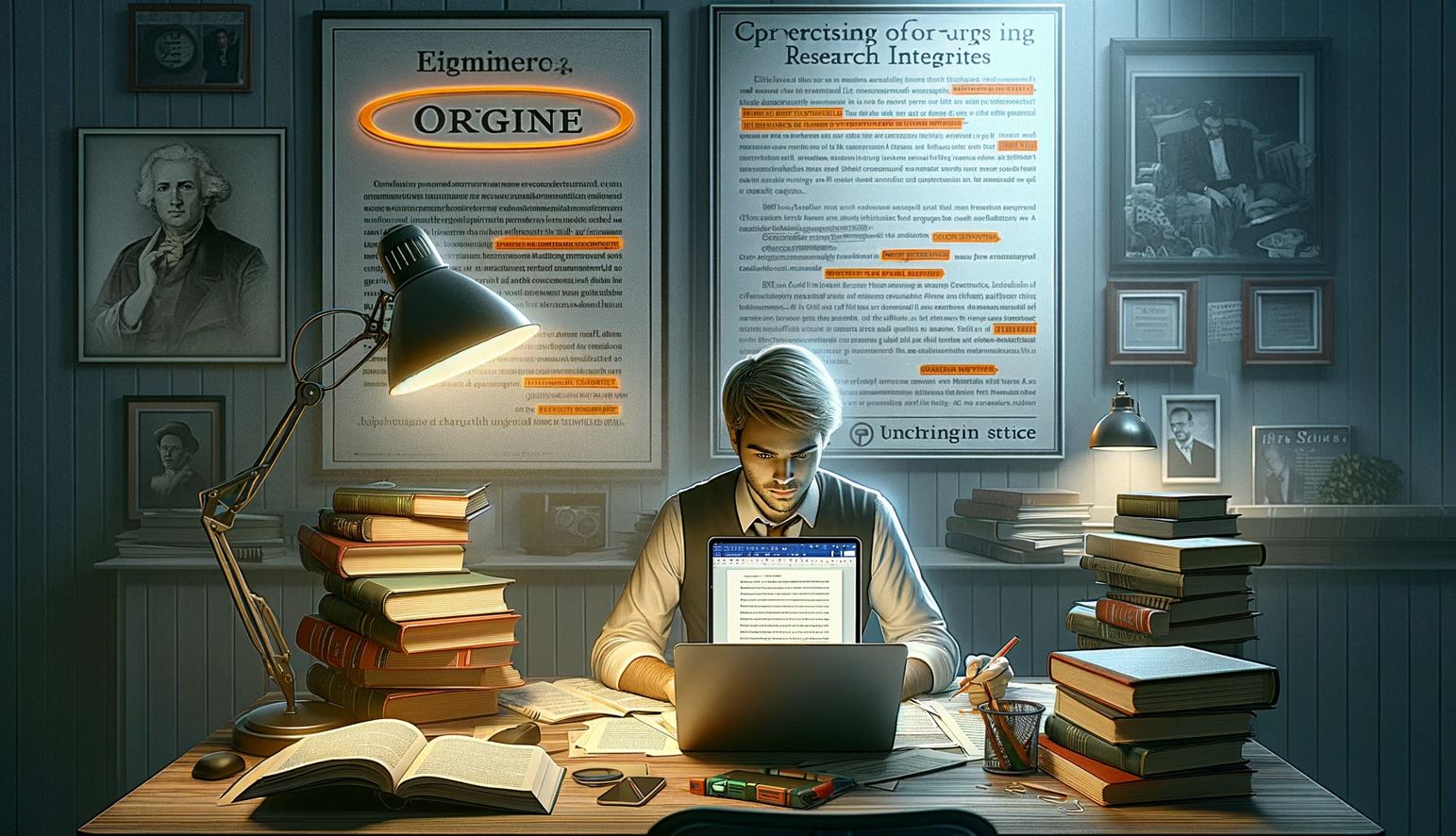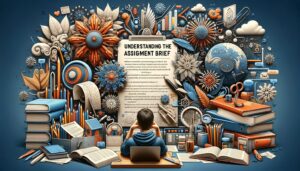Ever felt the heat of Turnitin’s AI staring down your paper, ready to flag any hint of unoriginality? Here’s a nugget for you. I’ve got some tips on how to avoid Turnitin AI detection.
I’ll share with you savvy strategies that’ll keep your writing in the clear—think of it as your anti-plagiarism toolkit. And guess what? All it takes is a few smart moves to stay ahead.

Try these new AI-powered tools:
- 5 Best AI Detectors To Unmask AI-Written Content With Accuracy
- 5 Best AI Writers To Boost Your Productivity And Content Quality.
- This "Secret AI Writer" Can Bypass AI Detection Like A Pro.
Dive in and let’s beat those bots at their own game! Learn how to avoid Turnitin AI detection now.
Article At-A-Glance
- Before you write, understand your assignment well to make sure your work is original.
- Write by hand first to help think of different ideas that are all yours.
- Pick a topic that’s rare. It’s less likely Turnitin has seen it before.
- Learn about your subject and rewrite in your own words so Turnitin doesn’t flag you for copying.
- Use tools like Undetectable AI wisely to keep your writing unique without copying.
Table Of Contents
Tips On How To Avoid Turnitin AI Detection
Alright folks, let’s chat about dodging the ever-watchful eye of Turnitin’s AI – think of it as a friendly game of hide and seek with your words. We’re not here to play the system, but when you pour your soul into an essay, wouldn’t you want it to shine on its own merit?
So buckle up, I’ve got some crafty techniques that’ll keep your writing fresh and undetected and nope, we’re not gonna regurgitate that bulleted list.
Understanding The Assignment Brief
So, you’ve got this assignment and you’re thinking about how to get past Turnitin’s keen eyes. First up – get what your assignment is all about. Seriously, this step is a game-changer.
By grasping the assignment guidelines, you dodge that plagiarism trap like a pro. You see, when you really understand the task requirements, your work turns out original because it’s built on your unique take.
Teachers love tossing Turnitin into the mix to keep things fair and honest in class. It’s like their secret weapon for catching copycats. Get ahead of the game by following the assignment criteria they gave you – do this, and you won’t just avoid trouble but also craft work that stands out!
Keep it real with your own voice and ideas because that’s how staying clear of Turnitin alerts actually works!
Keeping It Manual
Writing your work by hand sure can be a workout for your hand. But, it’s also a smart move to keep Turnitin from catching on. You see, when you jot down thoughts the old-fashioned way, your brain gets to chewing on those ideas differently than just typing away.
That’s because writing by hand boosts comprehension and helps you learn better.
That’s because writing by hand boosts comprehension and helps you learn better.
Now take that handwritten masterpiece and turn it into typed text—still your words, still original. This way not only does Turnitin get thrown off track, but you also end up learning more about what you’re writing on.
And hey! Picking an uncommon subject or adding your own zesty twist counts big time here too. It keeps things fresh and makes sure no computer is calling out “copycat” on your watch.
Choosing A Unique Topic
Picking a rare subject for your paper is like finding a hidden gem—it stands out! It’s smart because the less common your topic, the lower the chance Turnitin has seen it before.
Imagine crafting a story no one else tells. That’s what you do when you select an unconventional topic. You grab attention and make it hard for that sneaky AI to call you out.
Opting for a distinctive theme isn’t just about dodging AI detection, though. It also means diving deep into new ideas and giving yourself a challenge. Get ready to impress with fresh content—after all, if it’s something new, who can claim you copied? Next up is mastering the art of saying things in your own words through effective research and paraphrasing techniques.
Effective Research And Paraphrasing Techniques
So, you’ve found a topic that stands out. Nice! Now let’s dig into how you can research and rewrite stuff so Turnitin won’t catch you.
- Dive deep into your topic – Look everywhere for info, not just on the first page of Google. Books, interviews, and articles can give you golden nuggets of knowledge that others might not find.
- Take good notes – Jot down the important points as you go. Later, these will help you remember what to talk about in your own way.
- Understand it first – Before trying to rewrite anything, make sure you get it. This means no fancy words or ideas are left unclear. You gotta know it to show it in your style.
- Spin it with your own words – Once you have it down pat, use your own words to tell the story or explain the idea. Think about how you’d tell a friend about it.
- Mix up sentence structure – Don’t just change words. Play with the order too! Instead of “The cat sat on the mat,” try “On the mat sat the cat.” Sounds simple but works like a charm.
- Get creative with synonyms – Use different words that mean the same thing but don’t overdo it where it doesn’t sound like real talk anymore.
- Break things up – If there’s a big chunky paragraph full of facts and figures, break it up! Split long sentences into shorter ones and sprinkle in some of your thoughts.
- Read it out loud – Hearing how something sounds can show if it flows well or feels bumpy and weird.
- Got Undetectable AI? Throw that into the mix too (but shh… we didn’t say that). It can switch things up in ways we humans might not think about.
Using Undetectable AI To Bypass AI Detection
Undetectable AI is like a secret agent for your paper. It helps you stay off Turnitin’s radar. Picture this: You choose a topic that’s not all over the internet, and Undetectable AI gives it the special touch to make sure your work stands out as fresh and new.
And with three smart strategies, it guides you on how to fly under the detection system. Just follow its five steps, and boom – your essay looks like 100% original craft.
Now, let me tell you about strategy one – being untraceable by picking something unique to write on. That way, Turnitin’s AI might just shrug and say, “Never seen this before – must be new.” With Undetectable AI in your corner, you’re weaving through those tricky plagiarism checks like a pro! Next up is diving into why passing that AI detection matters so much.
The Need To Pass Turnitin AI Detection And Plagiarism

Teachers and bosses need to trust the work you give them. When writing papers or doing projects, your ideas should be your own—or if you use someone else’s ideas, you have to say where they came from.
This shows respect for the person who first had the idea. Turnitin helps teachers and bosses check if all parts of your work are original.
If Turnitin finds parts that match someone else’s work, this could mean trouble for you. It might look like you copied on purpose, even if it was an accident. So it’s really important to make sure everything is written in your own words and any information taken from other places is properly shown with citations.
Making sure your work passes Turnitin keeps everyone honest and upholds standards for research integrity and academic writing that schools and jobs expect from us all.
Understanding Turnitin And AI Detection
Hey, let’s get real about Turnitin and its eagle-eyed AI detection—like, how does it actually sniff out your “borrowed” words? And why should you care if you’re planning on keeping things 100 with your academic game?
Dive in to uncover the secrets behind Turnitin’s tech and why playing it straight-up is a major key for not only acing that paper but also leveling up your integrity stats.
What Is Turnitin And How Does It Work?
Turnitin is like a super-smart detective for writing. It has a big job: checking to see if what you’ve written looks too much like stuff that’s already on the internet or in other papers.
Imagine it scanning through millions and millions of pages super fast, looking for clues that show parts of your work match something else. This software uses special algorithms (think secret codes) to find these matches.
It’s all about spotting patterns in your words that might shout “Hey, I’ve seen this before!” If Turnitin finds too many similarities, it could mean someone copied—and that’s a no-no.
It’s all about spotting patterns in your words that might shout “Hey, I’ve seen this before!” If Turnitin finds too many similarities, it could mean someone copied—and that’s a no-no.
So how does Turnitin do its thing? Well, when you turn in your paper online, Turnitin takes a good look at it. It compares every line against loads of books, articles, and websites to make sure everything is original.
The software flags bits that look copied so teachers can check them out. It’s smart but not perfect—sometimes it needs a human to make the final call on whether something really is plagiarism or just a coincidence!
Importance Of AI Detection In Academic And Professional Careers
So, now we know how Turnitin checks your work. But let’s talk about why catching AI in writing is a big deal for school and jobs. Imagine turning in an essay that you didn’t write yourself. It wouldn’t be fair, right? Well, that’s where AI detection comes into play.
It helps teachers and bosses make sure the words they’re reading are really yours.
Teachers and people who hire others need tools to spot when a computer might have done the work instead of a person. Like detectives with magnifying glasses, they use programs such as Turnitin to look closely at your writing.
This matters because schools want students to learn and think on their own. In jobs, bosses expect original ideas from their teams – not something whipped up by a clever bot! So when AI-powered paraphrasing tools show up, educators and leaders must stay one step ahead to keep things honest and real.
Consequences Of Plagiarism And The Need To Pass AI Detection
Ah, plagiarism – the academic equivalent of stealing someone else’s lunch. Joking aside, getting busted by Turnitin’s AI is no laughing matter. It’s as if an alarm sets off while trying to sneak into a movie – super embarrassing and potentially career-damaging.
So, before you even think about playing copy-paste commando with your next paper, let’s talk consequences because trust me, they’re as real as that “F” you’d rather not see on your transcript.
Effects On Academic And Professional Reputation
Getting caught by Turnitin can hurt your school or job life big time. If Turnitin’s AI smells something fishy in your work, it could mean trouble. We’re talking failing classes, getting kicked out of school, or even worse stuff if you’re a professional.
Imagine working hard at your job and then—bam!—you get pegged for stealing someone else’s words. That’s a fast track to losing respect and maybe even your job.
That paper or project you turned in is like the face you show to the world. Mess up with plagiarism, and that face gets a big old stain on it—the kind that doesn’t wash off easily.
Keep this stuff clean folks. Use your own words and ideas—it’s worth it! Okay, let’s keep moving—who wants to find out about things that can happen if you don’t pass Turnitin’s eagle-eyed checks?
Potential Consequences For Career And Education
Moving on from reputation, let’s talk about what could happen with your career and school life. If you cheat and get caught, it could hit you hard in the future. Imagine getting kicked out of a class or even your whole school – that’s not something you want! It can mess up your chances to study more or find a good job.
Your work should be yours. When schools or jobs see you as dishonest, they may not trust you anymore. Cheating by copying others is like telling lies. If people catch you once, they might think you’ll do it again.
So always do your own work and stay true to yourself – it’s the best way for everyone!
Importance Of Ethical Writing And Avoiding Plagiarism
Writing the right way matters a lot. It’s all about being honest and fair. When you write, showing that you did the work yourself is key — this means not copying others’ words or ideas without saying where they came from.
If people find out you copied, it can hurt your name and future chances in school or jobs.
Using your own words shows respect for yourself and others who read your work. Originality shines through when you really understand what you’re writing about. It’s as if you’re giving a gift of your thoughts to the world.
Ethical behavior goes beyond just avoiding trouble. It builds trust.
You’ve got to watch out for self-plagiarism too — yep, that’s a thing! Even using something from before without saying so can be wrong (weird but true). So pull up those sleeves and dive into research with excitement, making every word count as if it were gold.
Now let’s talk tools. Ever heard of Undetectable AI? Well, hang tight because we’re diving into that next!
The Role Of Undetectable AI In Helping Writers Pass AI Detection
Staying true to ethical writing, it’s key to make sure your work is original.
That’s where Undetectable AI jumps in. This smart tool has one job: to help you write text that plagiarism checkers like Turnitin can’t spot.
It takes your words and gives them a new twist, so they come out fresh and undetected by those sneaky AI detectors.
It takes your words and gives them a new twist, so they come out fresh and undetected by those sneaky AI detectors.
Let’s say you’ve got a paper due, and you want it to shine with originality. You type up your thoughts, run them through Undetectable AI, and poof! What comes out the other side is pure gold — a version that keeps all your ideas but says them in ways that pass the toughest originality checker tests.
Quick as a wink, this rewriting tool ensures what you turn in ticks all the boxes for content authenticity without tripping any alarms for copied text.
Final Tips For Avoiding Turnitin AI Detection
Avoiding Turnitin AI detection means making sure every piece of work you turn in is truly yours. Here’s how to keep your writing original and stay out of trouble:
- First off, stick to writing by hand – or, well, typing on your own without copying from anywhere else. It’s like using your brain as the best tool you’ve got.
- Dive deep into your research. Look up all kinds of sources, take good notes, and then say it in your own words.
- Make sure you really get what the assignment is asking for. When you understand it down pat, it’s easier to come up with your own ideas.
- Choose a topic that’s not the same old thing everyone else is talking about. Being unique can make all the difference.
- Just paraphrase like a pro—take what someone said and put it into fresh words. Tell a story but in a whole new way.
- Go for tools that help you learn and write better but don’t rely too much on them. Think of them as friendly sidekicks on your writing adventure.
- Keep up with academic honesty – because cheating just isn’t worth it. Playing by the rules keeps everyone on a level playing field.
Avoid Turnitin AI Detection With Smart Strategies And Ethical Excellence
And there you have it, folks—the inside scoop on navigating the tricky waters of Turnitin’s AI detection. It’s a tightrope walk between innovation and integrity. However, with these savvy strategies under your belt, you’re set to ace that originality score without tipping the ethical scale.
Keep your writing game strong and your conscience clear. After all, it’s about crafting work that’s as authentic as those late-night snack cravings—irresistible and undeniably yours.
FAQs
1. What’s the first thing I should do to avoid Turnitin AI detection?
Start by writing your own work from scratch – that’s a surefire way to keep things unique!
2. Can changing the words of someone else’s writing help me fly under Turnitin’s radar?
Hmm, simply swapping out words won’t cut it. You’ve gotta give those ideas your own spin.
3. Is it cool if I just mix up sentences from different sources for my paper?
Mixing sentences is like playing with fire—you’re bound to get burned (by Turnitin, that is).
4. How do quotes affect Turnitin AI checking my paper?
Turnitin knows quotes are legit as long as you use them sparingly and cite ’em right.
5. Will putting in lots of pictures and graphs mess with what Turnitin sees in my work?
While pictures and graphs add flair, they don’t fool Turnitin—it’s all about the text.
Meet our resident tech wizard, Steve the AI Guy. Now, before you get any wild ideas, let’s clear up one thing – he’s 100% human! I mean, he’s got the work history to prove it. He spent a decade diving into the deep end of the tech industry doing business intelligence work, splashing around with two of the world’s largest business consulting companies, Deloitte and Ernst & Young. Learn More










